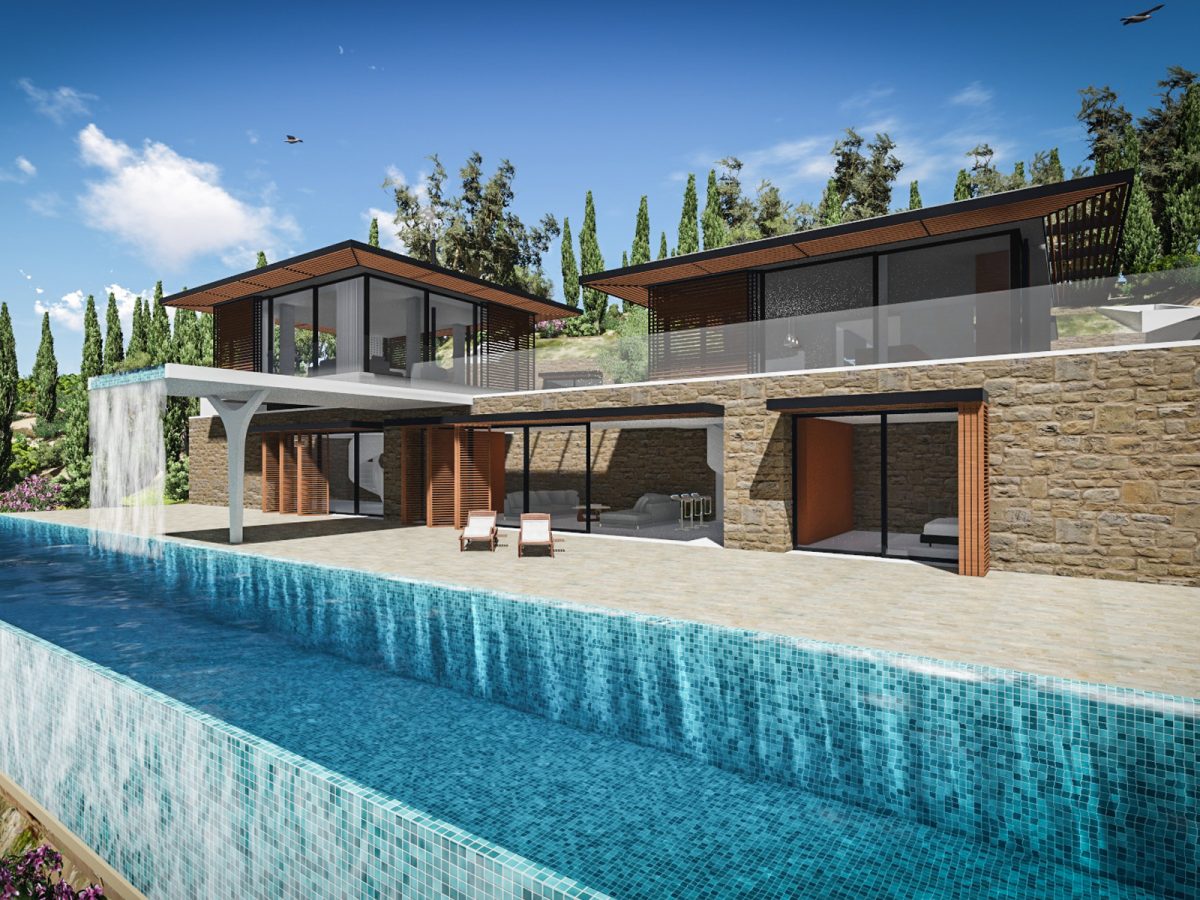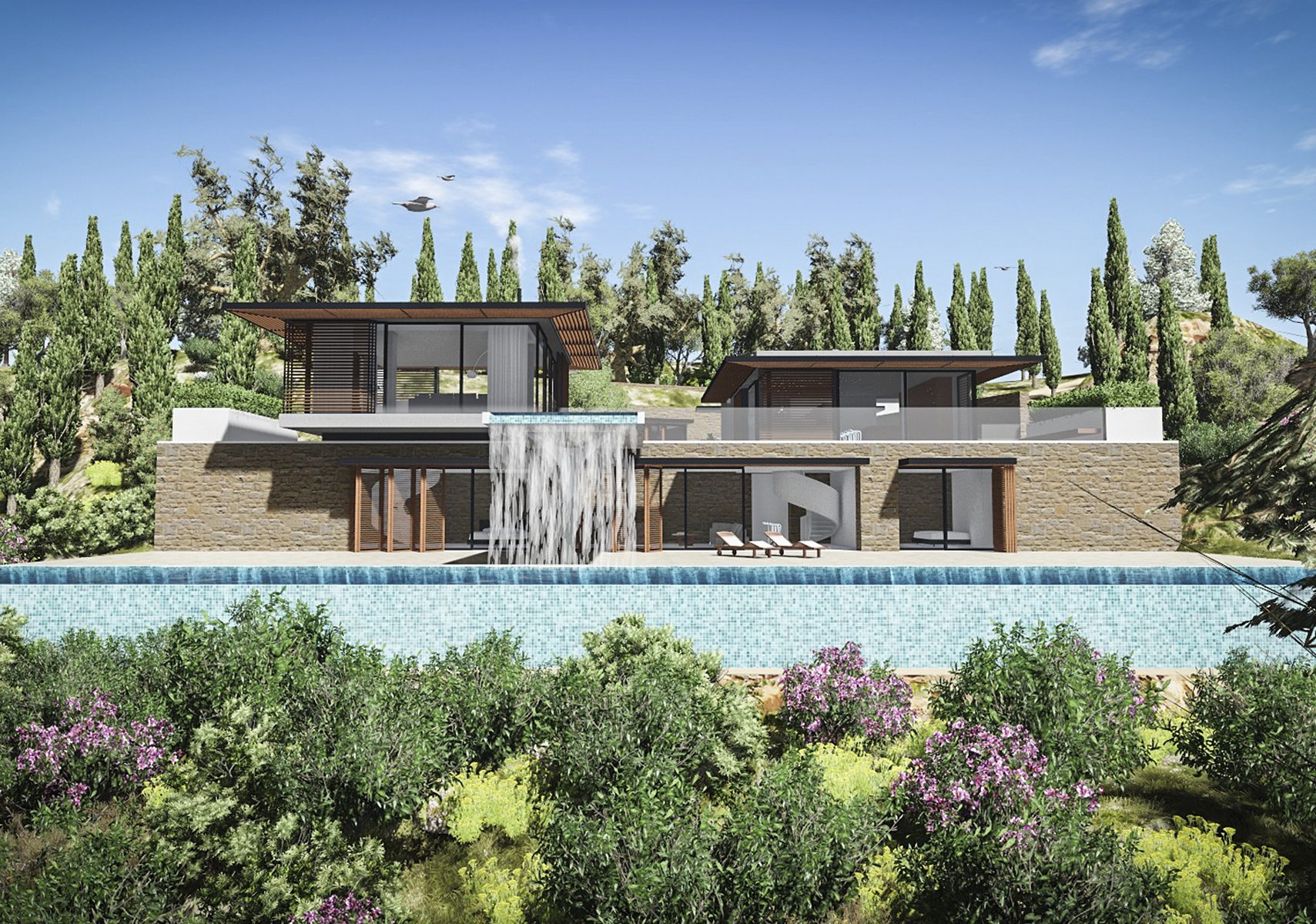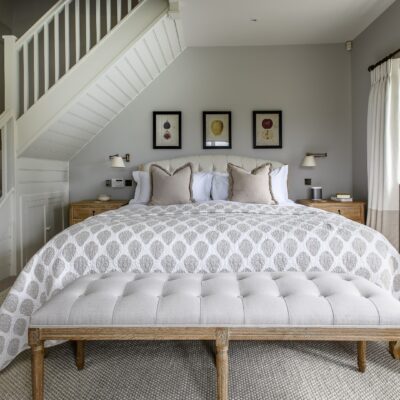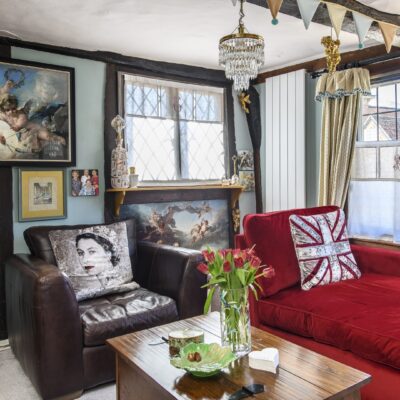Meet Reinhard Alexander Weiss, director of 3s, the architects behind this award-winning Greek paradise
Can you tell us about a memorable project that you’ve worked on?
As well as individual houses in the UK, we sometimes design holiday homes abroad. One client approached us a few years ago, who had bought a steep site of a few acres on the island of Lefkada in Greece, with access to a small sandy beach at the bottom. He showed us an image of four equally sized cubes sitting on a terrace-like plinth and asked us to design a house half buried into the hillside, with these cubes housing the kitchen, dining and living areas. To tackle the heat during the day he wanted us to come up with ideas on how we could provide cooling to the area without using air conditioning. We designed the waterfall house, with a stream of water running though the bedroom and bathroom wing, across the large upper terrace, and onto a chute above the new swimming pool. All of the larger parts of the building are buried into the ground, with large front glass doors enjoying the views and square glass pavilions with louvred shutters and high level natural ventilation nestled into the hillside. The problem was that the site was riddled with rocks, and not even a footpath led down to the water. It became clear that the ground preparations would not only take a lot of time but cost a lot of money, so he decided to buy all the machinery himself and employ some workers for a year to prepare a small access road with dry-walled terraced gardens on either side to get the building off the ground. The project received an International Design Award for Greece in 2019.

What should clients be thinking about before they approach an architect?
Building a house is quite a complex undertaking and it requires a lot of coordination and some experience in making the right decisions at the right time. Every building is different so there is not a blueprint on how to do things right. My advice is, before you approach an architect look at their portfolio on completed buildings, whether you like the style of architecture, how long they have been in practice, and what team of consultants they use to work with to control the design and construction process. Have a realistic budget in place and don’t be swayed by companies giving you unrealistic construction figures in your first conversation. And – most importantly – you need to get on with the team responsible as they will represent you in all questions in which you are not experienced. Often clients think that if they save money during the design and construction drawing process, they will manage the project on budget and save more for the build. It is a better approach to discuss material choices and finish specifications with your architect and have the shell build and interiors agreed and drawn up, so building costs can be pinned down as much as possible before works start on site.
Can you be involved throughout the project?
We get commissioned on most of our projects from initial design to practical completion and regularly work with a proven team of consultants to make the build process as smooth as possible.

What led you to a career in architecture?
I always showed some interest in design and during my early school education got a lot of positive feedback from my arts teacher about my drawing skills and good sense for colours. As a child, I also collected dry twigs and moss in the nearby forest and started cutting small buildings out of cardboard like in some of the craft books you can buy in shops to create miniature villages. So at the end of my A-levels in Germany, my arts teacher floated the idea of studying architecture. After my diploma course in Germany, I chose to design a Philharmony building for Dresden for my master thesis, and handed the model to the town hall. Soon after, the city mayor called me and asked whether I would like to build it there – I was too young at that stage, but a concert hall of similar design stands today on the riverbank of the Elbe.
Have you noticed any trends that clients have been requesting recently?
Following Covid and increasing work flexibility, the home office has become a focal point of home designs, as well as spa areas with steam shower rooms and indoor saunas or jacuzzis. With travel restrictions and other recent difficulties, holiday trips are less possible, so people are focusing more on creating feel-good factor in their homes, rather than seeing them as a value asset. More money is being spent on decoration and wall or floor finishes to make areas where the family can gather and enjoy staying home.
3s architects are a RIBA chartered practice who work on projects in the UK and around the world. For more info and inspiration visit 3s-ad.com
You may also like
Out of the blue
Tricia Trend’s Goudhurst home is the perfect base from which to explore the beautiful countryside and forests that surround it – and what better place to stay than in a traditional Kentish oast! How many times have you stayed in...
In the clouds
In a central, yet completely private, location in Tenterden, a creative couple have lavished their Grade II listed maisonette with colour and personality We mortals are but dust and shadows,’ said the poet Horace, reminding us from long ago of...
The ultimate family getaway
Down a quiet country lane, enveloped by stunning countryside, Crabtree Farm has provided Andrew Jenkinson and his family with the space they needed to breathe, after many years spent in London. Following extensive renovation work, the farm is now ready...










